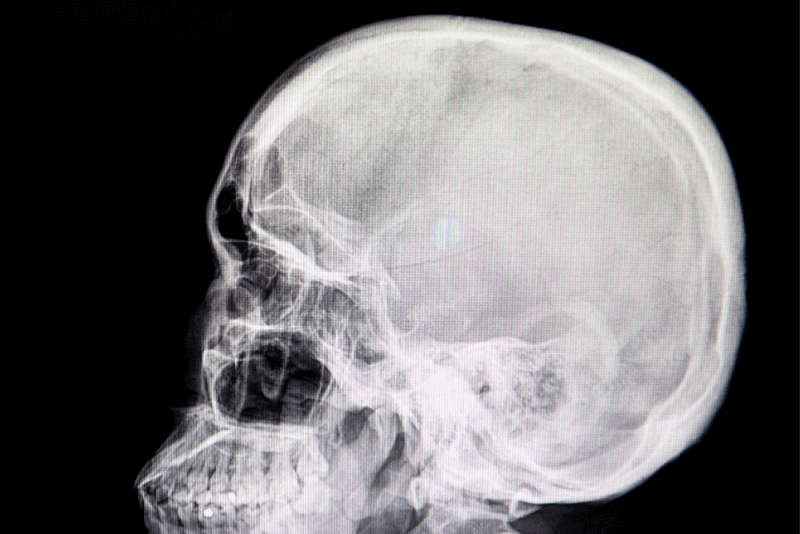30-Second Summary
- A brain hemorrhage occurs when blood vessels in the brain rupture.
- It is a serious health condition that can lead to fatal outcomes.
- Symptoms include severe headache, loss of consciousness, numbness, weakness, speech disorders, vision problems, and loss of balance.
- It is important for patients recovering from a brain hemorrhage to receive physical therapy and rehabilitation support.
What is a Brain Hemorrhage?
A brain hemorrhage is generally defined as bleeding that occurs within the tissues inside the skull. These tissues include the brain surface, brain tissue, and brain cavities. Affecting approximately 1 million people worldwide each year, a brain hemorrhage can cause severe disabilities and even death.
Types of Brain Hemorrhages
Brain hemorrhages are classified based on the affected region or the cause. The types based on the location of the hemorrhage are as follows:
- Intracerebral hemorrhage occurs in the brain tissue.
- Intraventricular hemorrhage occurs in the ventricles, fluid-filled spaces between the brain and the skull.
- Epidural hemorrhage occurs in the outer membrane surrounding the brain and cerebellum. These hemorrhages are often seen following skull trauma.
- Subdural hemorrhage occurs between the layers of the membranes surrounding the brain. Subdural hemorrhages are often caused by blood disorders and low intracranial pressure, but can also occur without an apparent cause.
- Subarachnoid hemorrhage occurs between the innermost layer and the surrounding membrane of the brain.
Brain hemorrhages are also categorized based on their cause. Accordingly, brain hemorrhages can be classified into the following subcategories:
- Traumatic hemorrhages are one of the complications that occur after a severe or moderate head injury. They rarely occur after minor head injuries. Traumatic hemorrhages are more common in men and children and may include traumatic intracranial hematoma, subdural hematoma, or subarachnoid hemorrhage.
- Hypertensive hemorrhages are caused by high blood pressure. These hemorrhages often occur in middle age and can be associated with prolonged high blood pressure, kidney failure, diabetes, smoking, and alcohol use. They can cause weakness on one side of the body, headache, speech disorders, wheezing, seizures, and coma.
- Another type of brain hemorrhage is aneurysm bleeding, which occurs when a blood vessel in the brain swells and balloons. The severity of the damage from aneurysm bleeding varies depending on the intensity of the bleeding.
Symptoms of a Brain Hemorrhage
Symptoms of a brain hemorrhage vary from patient to patient and are directly related to the location of the hemorrhage and the amount of affected tissue. Symptoms can develop over time or appear suddenly, and they may progressively worsen.
- Disruption of brain functions in the area of the hemorrhage,
- Epileptic seizures,
- Dizziness,
- Vomiting,
- Nausea,
- Severe headache,
- Mild confusion,
- Drowsiness,
- Coma,
- Severe headache,
- Loss of consciousness,
- Numbness,
- Weakness,
- Inability to comprehend spoken words,
- Drowsiness,
- Lack of response to events and sounds in the environment,
- Speech impairment,
- Loss of balance,
- Sudden dizziness,
- Coordination disorder,
- Numbness and tingling on one side of the body,
- Difficulty swallowing.
- Taste disturbance.
- Vision problems,
- Involuntary eye movements,
- Drooping eyelid,
- Difficulty raising or holding arms,
- Numbness and tingling in the legs,
- Unilateral facial paralysis,
Causes of a Brain Hemorrhage
There are many factors that can cause a brain hemorrhage, and some factors increase the risk. The common causes or risk factors for a brain hemorrhage include:
High Blood Pressure
The most common cause of brain hemorrhage is high blood pressure, which over time can thin the blood vessels in the brain, leading to a hemorrhage.
Aneurysm
An aneurysm, defined as a ballooning of weak areas in brain blood vessels due to pressure, can lead to a brain hemorrhage if it ruptures. Before rupturing, aneurysms may cause symptoms like vision disturbances and drooping eyelids due to pressure on surrounding tissues.
Head Trauma
Brain hemorrhages are commonly seen after traumas such as falls from height or traffic accidents.
Blood Vessel Abnormalities
Weakness and abnormal connections in the blood vessels around or within the brain are sometimes congenital and can cause hemorrhages.
Amyloid Angiopathy
Amyloid angiopathy is defined as an abnormality in the walls of blood vessels that develops with high blood pressure and aging. It causes small bleeds before leading to larger hemorrhages, which may go unnoticed in the early stages.
Bleeding Disorders
Certain clotting disorders can prevent small brain hemorrhages from stopping on their own, leading to more severe bleeding.
Brain Tumors
Tumors in any part of the brain are another cause of brain hemorrhages.
Diagnostic Methods for Brain Hemorrhage
Brain tomography is particularly useful in diagnosing brain hemorrhages, as it can quickly and accurately identify the location and severity of the hemorrhage. Tomography also helps explain which symptoms observed during the examination are caused by the hemorrhage. Lastly, tomography helps determine the type of hemorrhage.
To identify the underlying causes of a hemorrhage detected by brain tomography, additional tests like MRI, CT angiography, and MR angiography may be performed.
Treatment Methods for Brain Hemorrhage
Due to the high risk of death, brain hemorrhages require emergency intervention. Immediate treatment is also necessary to prevent vision, speech, and movement loss caused by brain hemorrhages.
The treatment of brain hemorrhages varies depending on the size, type, and overall health condition of the patient. While observation may be sufficient for some patients, others may require treatment through angiographic methods. In addition, surgical treatments are commonly used for brain hemorrhages. Medications to reduce brain swelling are also part of the treatment.
Recovery Process
The recovery process after a brain hemorrhage depends on the severity of the hemorrhage. Small hemorrhages may heal without any lasting damage, but larger hemorrhages can leave lasting effects such as speech and respiratory disorders, coma, and weakness.
Patients who have suffered from brain hemorrhages require assistance in their recovery process. Depending on the damaged area of the brain, patients may need physical therapy and rehabilitation. In addition, social support is an important part of the recovery process.
Post-Brain Hemorrhage
Patients who have experienced a brain hemorrhage are at higher risk of experiencing another hemorrhage in the future. Therefore, it is important for patients to be mindful of the factors that caused the initial hemorrhage.
What Should Be Monitored After a Brain Hemorrhage?
The precautions that people who have suffered a brain hemorrhage should take in their later life depend on the cause and location of the hemorrhage. For instance, those who have suffered a hemorrhage due to high blood pressure should continue taking their blood pressure medications regularly and maintain regular doctor visits. Keeping blood pressure at optimal levels is crucial in preventing the recurrence of a brain hemorrhage.
Trauma, another common cause of brain hemorrhage, is also a factor that patients need to be cautious about. Whether or not they have previously experienced a brain hemorrhage, everyone should protect themselves from head trauma.
There is no specific dietary recommendation for preventing brain hemorrhage. However, it is well-known that sugar and salt contribute to high blood pressure. Therefore, it is advisable to avoid these foods.
What to Do in Case of a Brain Hemorrhage?
A brain hemorrhage is a condition that requires emergency medical intervention and has a high mortality rate. Therefore, if someone around you is experiencing a brain hemorrhage, emergency medical help should be sought immediately. If the patient loses consciousness, care should be taken to prevent them from harming themselves. The primary goal should be to get the patient to a medical facility as soon as possible to save as much healthy brain tissue as possible.










